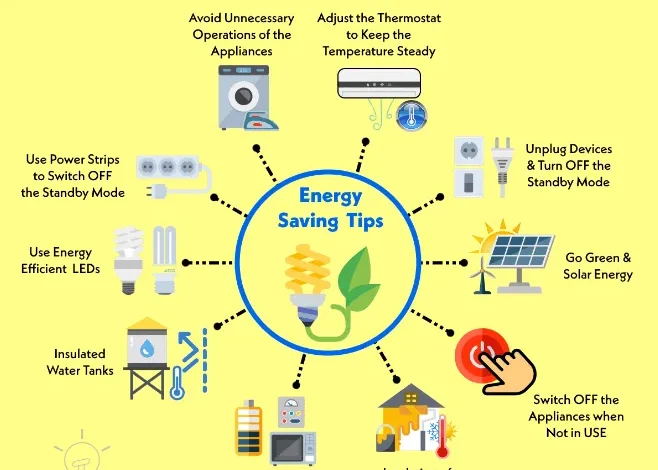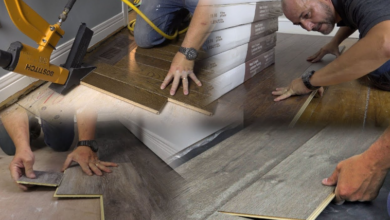Powering Savings: Strategies for Energy Efficiency and Lower Utility Bills

In today’s world, where energy costs are steadily rising, finding ways to improve energy efficiency and reduce utility bills is a priority for many homeowners. Not only can these strategies save you money, but they also contribute to a more sustainable and environmentally friendly lifestyle. In this blog post, we’ll explore practical and impactful strategies that can help you achieve greater energy efficiency in your home.
Contents
- 1 1. Conduct an Energy Audit
- 2 2. Upgrade to Energy-Efficient Appliances
- 3 3. Improve Home Insulation
- 4 4. Install Programmable Thermostats
- 5 5. Utilize Natural Light
- 6 6. Opt for Energy-Efficient Windows
- 7 7. Practice Energy-Saving Habits
- 8 8. Use Ceiling Fans
- 9 9. Install Solar Panels
- 10 10. Monitor and Control Energy Usage
- 11 Conclusion
1. Conduct an Energy Audit
One of the first steps towards improving energy efficiency is conducting an energy audit. This involves assessing your home’s energy usage to identify areas where you can make improvements. You can either hire a professional energy auditor or perform a DIY audit using online tools and checklists. An energy audit will help you pinpoint energy leaks, drafty windows, inefficient appliances, and other energy-wasting culprits.
2. Upgrade to Energy-Efficient Appliances
Replacing old, energy-hungry appliances with energy-efficient models is a significant step towards reducing your utility bills. Look for appliances with the ENERGY STAR label, which indicates they meet strict energy efficiency guidelines set by the U.S. Environmental Protection Agency. Upgrading your refrigerator, washing machine, dishwasher, and HVAC system can lead to substantial savings over time.
3. Improve Home Insulation
Proper insulation is crucial for maintaining a comfortable temperature in your home and reducing energy consumption. Insulating your walls, attic, and floors can prevent heat loss during the winter and keep your home cooler during the summer. Consider hiring a professional insulation company in Provo to evaluate your current insulation and recommend upgrades. Effective insulation can significantly lower your heating and cooling costs, ultimately leading to substantial savings on your utility bills.
4. Install Programmable Thermostats
Programmable thermostats allow you to set different temperature settings for various times of the day, ensuring that you’re not wasting energy when you’re not at home. You can program the thermostat to lower the temperature when you’re asleep or away and raise it before you return home. Smart thermostats take this a step further by learning your schedule and preferences, optimizing energy usage automatically.
5. Utilize Natural Light
Maximizing natural light in your home can reduce the need for artificial lighting during the day. Open curtains and blinds to let in sunlight, and consider installing skylights in darker areas. Additionally, using LED or CFL bulbs in place of traditional incandescent bulbs can save a significant amount of energy.
6. Opt for Energy-Efficient Windows
Windows play a crucial role in your home’s energy efficiency. If your windows are old and drafty, consider upgrading to energy-efficient double-pane or triple-pane windows. These windows provide better insulation and can significantly reduce heat loss in the winter and heat gain in the summer. Adding window treatments such as blinds, shades, or curtains can also help regulate indoor temperatures.
7. Practice Energy-Saving Habits
Small changes in your daily habits can add up to significant energy savings. Turn off lights, appliances, and electronics when they’re not in use. Unplug chargers and devices that consume standby power. Wash clothes in cold water whenever possible, and air-dry them instead of using the dryer. These simple actions can make a noticeable difference in your energy consumption.
8. Use Ceiling Fans
Ceiling fans are an energy-efficient way to keep your home comfortable year-round. In the summer, run the fans counterclockwise to create a cooling breeze. In the winter, reverse the direction to clockwise to circulate warm air that rises to the ceiling. By using ceiling fans in conjunction with your HVAC system, you can reduce the workload on your heating and cooling units.
9. Install Solar Panels
While it requires an initial investment, installing solar panels can significantly reduce your reliance on traditional energy sources and lower your utility bills in the long run. Solar panels harness the power of the sun to generate electricity for your home, and any excess energy can be sold back to the grid. Additionally, many states offer incentives and rebates for homeowners who install solar panels.
10. Monitor and Control Energy Usage
Keeping track of your energy usage can help you identify trends and areas for improvement. Many utility companies offer online tools and mobile apps that allow you to monitor your energy consumption in real-time. Smart plugs and energy monitors can also provide insights into how much energy specific devices are using. By staying informed, you can make more informed decisions about your energy usage.
Conclusion
Improving energy efficiency in your home is not only beneficial for your wallet but also for the environment. By implementing these strategies, you can reduce your utility bills, increase your home’s comfort, and contribute to a more sustainable future. Start with an energy audit, make upgrades where necessary, and practice energy-saving habits to see significant improvements in your energy consumption. Remember, every small step counts towards powering savings and achieving a more energy-efficient home.



